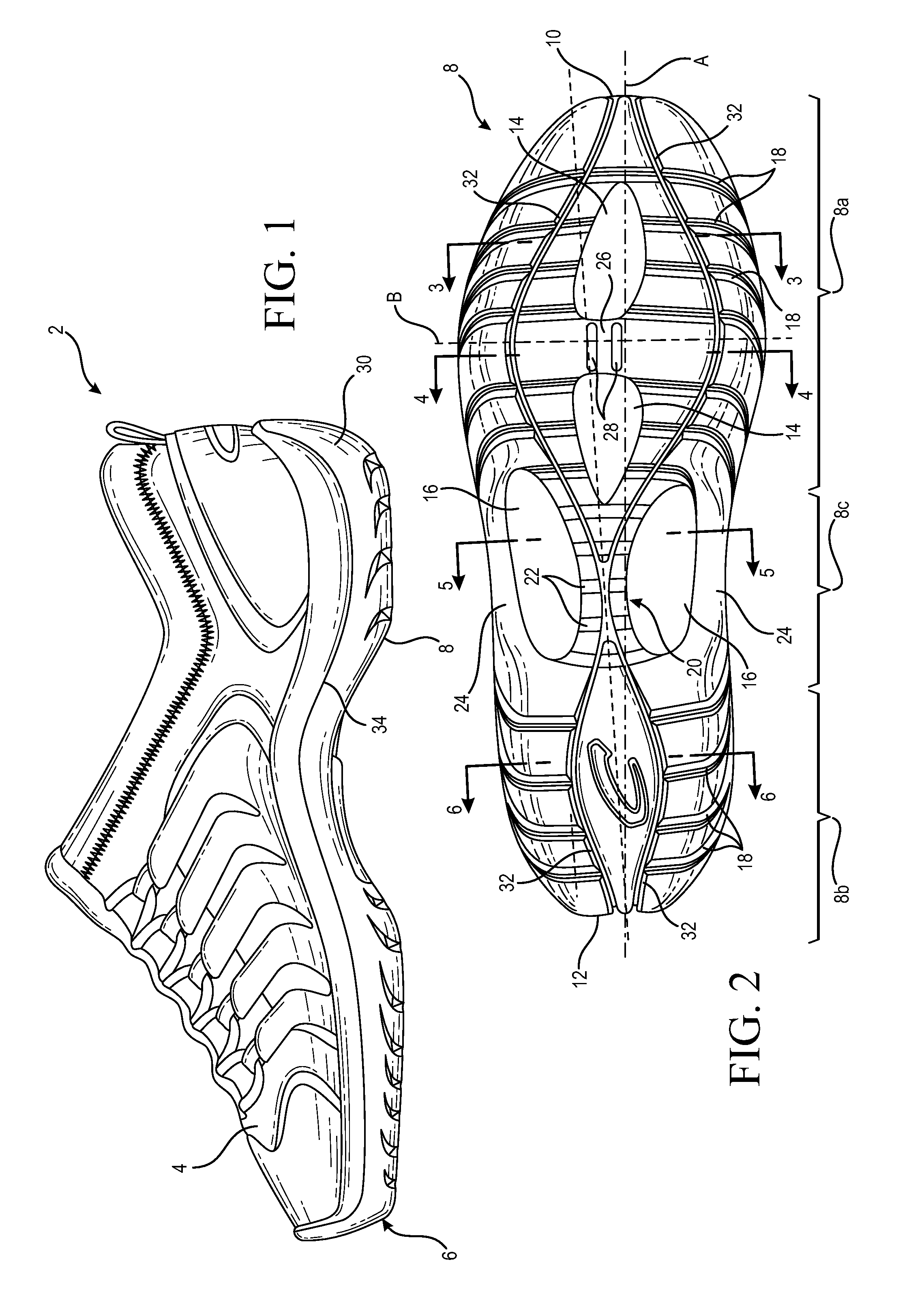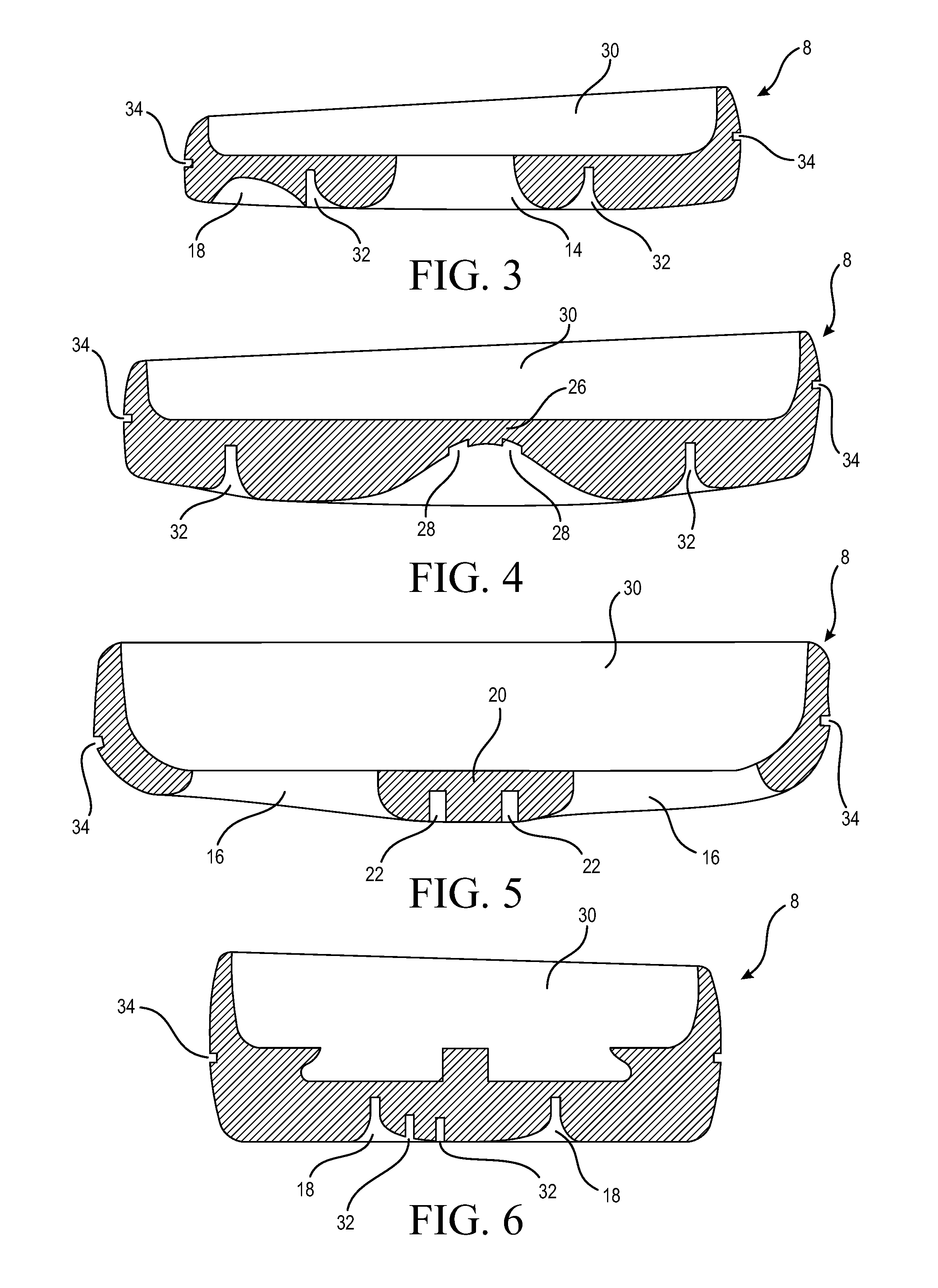Flexible shoe sole
a flexible, sole technology, applied in the field of flexible shoe soles, can solve the problems of not fully incorporating all of the ergonomic functions that the studio wearer requires, the shoe further prohibits the pointing of the foot, and the running shoe does not have the clean aesthetic of the dancer, so as to improve the aesthetics of the sole, improve the flexure of the forepart portion, and provide a clean line and appearance without diminishing the performance of the sho
- Summary
- Abstract
- Description
- Claims
- Application Information
AI Technical Summary
Benefits of technology
Problems solved by technology
Method used
Image
Examples
Embodiment Construction
[0016]There is shown in FIG. 1 a footwear article in the form of a dance sneaker 2. The sneaker has an upper 4 and a sole 6 connected with the lower portion of the upper. The upper is typically formed of canvas, stretch material such as nylon, spandex, mesh, foam, thermoplastic polyurethane (TPU), suede, leather, or other lightweight, dynamic, and durable fabric. The sole may comprise a plurality of layers such as a midsole (not shown) and an outsole 8 as is known in the art.
[0017]The invention relates to an improved outsole 8 which will be described with reference to FIGS. 2-6. The outsole and midsole are formed of a durable, flexible material such as TPU, polyurethane (PU), synthetic rubber, suede, microfiber, ethyl vinyl acetate (EVA), and leather. The outsole and midsole can be formed of a single material or a combination of materials and may have different durometers.
[0018]Referring now to FIG. 2, the outsole 8 has a toe end 10 and a heel end 12, a longitudinal axis A that exte...
PUM
 Login to View More
Login to View More Abstract
Description
Claims
Application Information
 Login to View More
Login to View More - R&D
- Intellectual Property
- Life Sciences
- Materials
- Tech Scout
- Unparalleled Data Quality
- Higher Quality Content
- 60% Fewer Hallucinations
Browse by: Latest US Patents, China's latest patents, Technical Efficacy Thesaurus, Application Domain, Technology Topic, Popular Technical Reports.
© 2025 PatSnap. All rights reserved.Legal|Privacy policy|Modern Slavery Act Transparency Statement|Sitemap|About US| Contact US: help@patsnap.com



